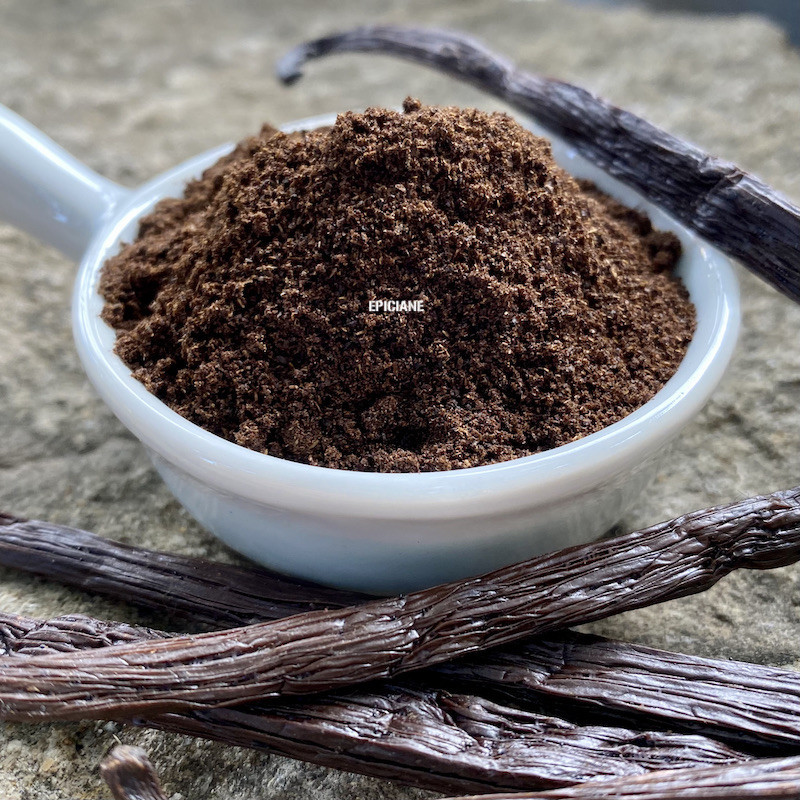
Reference: vanillebourbonE


It is made from 100% Bourbon vanilla with NO ADDED SUGAR. Its flavor is deep and robust.
Perfect for use in ice creams, custards, yogurts, and even in some fish preparations.
 Delivery
Delivery
Mondial Relay
 Returns
Returns
See conditions
 Payments
Payments
100% secure
Livré en sachet refermable
Composition:
100% natural Bourbon vanilla powder from the Planifolia variety, without added sugar, originating from Madagascar.
Culinary Uses:
The flavor of Bourbon vanilla is rich, robust, and deep.
This vanilla powder, made from whole beans without added sugar, is the perfect equivalent of a vanilla bean. It has the added advantage of dispersing evenly in mixtures, making it especially convenient in recipes where removing a whole bean may be difficult, such as custards, yogurts, ice creams, and cakes. Since it contains no sugar, it can also be used in savory dishes, like scallops. For maximum flavor diffusion, allow it to steep in your dish before cooking, just like a whole bean.
Ideal for sweet recipes, use this powder to enhance the flavors in chocolate, ice creams, yogurts, jams, compotes, cakes, and cookies. Bourbon vanilla’s depth of flavor also complements seafood dishes like scallops, prawns, and lobsters, as well as certain white meats, like veal.
Who am I? Cultivation:
Origin: Madagascar
Scientific Name: Vanilla planifolia
The aroma of each vanilla variety depends on the conditions of cultivation, preparation, and especially the type of vanilla. There are two main types: Tahitensis (commonly from Tahiti) and Planifolia, the latter forming the basis of Bourbon vanilla.
Vanilla also has medicinal benefits, stimulating the nervous system and helping ward off minor mood dips, similar to chocolate.
The cultivation and preparation of vanilla are labor-intensive, contributing to its relatively high cost. Natural pollination requires a specific bee found only in Central America, necessitating hand-pollination elsewhere in the world, a process invented by Edmond Albius in the 19th century. After pollination, the pod develops over six weeks and is harvested months later.
The transformation from fresh pod to the soft, fragrant bean we know involves up to 10 months of curing, drying, and aging. By the end, the pods lose about 80% of their weight, with only the finest beans developing the sought-after "vanilla frost," a sign of exceptional quality.
A Little History:
The Aztecs, and before them the Maya, flavored a rich cacao drink with vanilla. In the 16th century, Columbus brought vanilla to Europe. By the 17th century, it was beloved by Queen Elizabeth I, fueling international trade. For centuries, Mexico held a vanilla monopoly until Albius’s hand-pollination technique made it possible to grow vanilla globally. Today, Madagascar remains the leading vanilla producer despite competition from other regions.
Data sheet
Reference: vanillebourbonE
Reference: vanilletahitiE
Reference: vanillebourbonE
Reference: Papou

It is made from 100% Bourbon vanilla with NO ADDED SUGAR. Its flavor is deep and robust.
Perfect for use in ice creams, custards, yogurts, and even in some fish preparations.